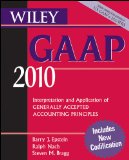Difference Between GAAP and IFRS
 GAAP vs IFRS
GAAP vs IFRS
The IFRS or the International Finance Regulation Standards are defined by the International Accounting Standards Board. The IFRS is increasingly being adopted by companies across the globe for preparing their financial statements. On the other hand, the US GAAP has been developed by the Financial Accounting Standards Board or FASB for listed companies. Chris Cox, former chairman of the Securities Exchange Commission or SEC, has asked US companies to transition to IFRS by 2016.
There are quite a few similarities between IFRS and US GAAP and the differences are rapidly getting reduced owing to the convergence agenda of both these organizations. The differences explained below are just a few significant ones and as of this point of time. These can change due to developments in the convergence agenda of the IFRS and US GAAP.
With respect to revenue recognition, US GAAP has developed a detailed guidance for different industries incorporating standards suggested by the other local accounting standard organizations in the US. IFRS, on the other hand, mentions two main revenue standards along with a couple of interpretations related to revenue recognition as guidance.
There are also some significant differences related to when an expense should be recognized and the amount that has to be recognized. For instance, IFRS recognizes the expense of certain stock options with vesting over a period of time sooner than the GAAP.
There are also some significant differences between the US GAAP and IFRS with respect to the arena of financial liabilities and equity. Instruments that were regarded as equity by the US GAAP will be considered as debt under the IFRS standards.
The US GAAP has several criteria for consolidation whereas under IFRS, a company can consolidate based on the power it can exercise on the financial and operational policies of the other entity. By being responsible for the reporting and performance of these new entities can affect the company’s financing arrangements and several more areas.
Unlike US GAAP, IFRS forbids companies from using the LIFO or the last in, first out method of costing inventory. Companies using LIFO will have to transition to other costing methodologies.
Summary:
1.Regarding revenue recognition, US GAAP is more detailed and industry-specific than IFRS.
2.Expense recognition has some differences with respect to the time period and expense amount that can be recognized by the companies.
3.Some financial instruments that were recognized as equity by GAAP will be recognized as debt under IFRS.
4.The IFRS allows consolidation based on the power exercised by the company on the financial and operational policies of the other entity.
5.IFRS does not allow the use of LIFO method of inventory costing.
- Difference Between Schizophrenia and Psychosis - March 7, 2024
- Difference Between African and Asian Elephants - March 7, 2024
- Difference Between Sunscreen and Sunblock - February 15, 2024

thank you for publishing common differences between IFRS and GAAP for it is very useful for me in understanding the article and making a reflcetion about it in our accounting subject. Thanks a lot.